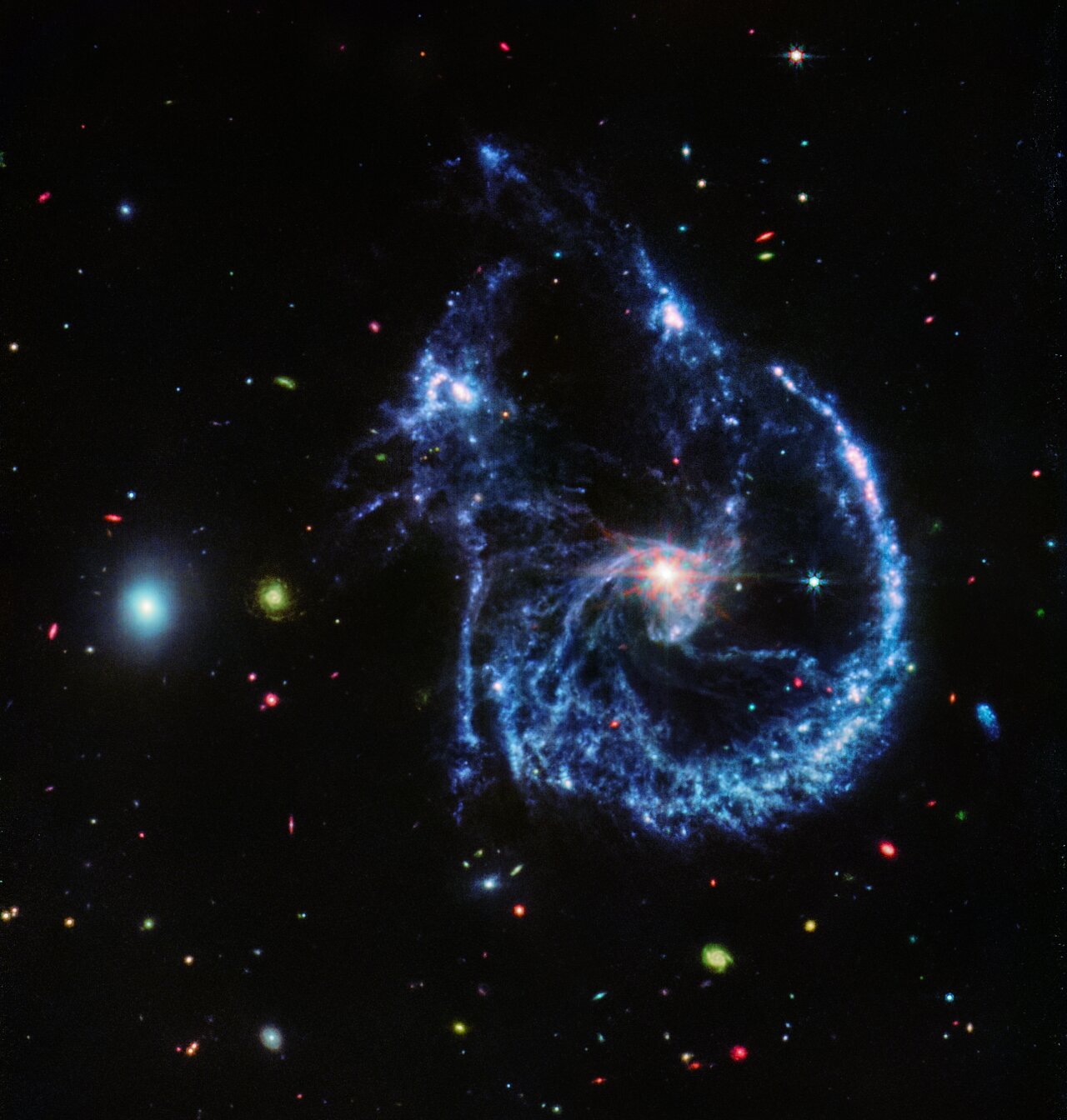Utilizing the James Webb Area Telescope, astronomers have imaged a surprisingly merry-looking collision between galaxies.
The merger of the massive spiral galaxy and the smaller elliptical galaxy, collectively referred to as Arp 107, is positioned round 465 million light-years from Earth within the constellation Leo Minor.
The $10 billion James Webb Area Telescope (JWST) imaged Arp 107 utilizing its NIRCam (Close to Infrared Digital camera) and its MIRI (Mid InfraRed Instrument) cameras. With these, the JWST noticed a near-transparent white “bridge” of stars that has been ripped from each galaxies. Star-forming areas of fuel and dirt are represented in orange and purple, collectively forming a smiley face among the many stars.
The spiral galaxy element of this merger is classed as a Seyfert galaxy, one of many largest teams of so-called “lively” galaxies that emit massive quantities of power from their facilities. The brightest of those galaxies possess energetic areas dominated by feeding supermassive black holes known as “quasars.”
Named after American astronomer Carl Ok. Seyfert, Seyfert galaxies are usually dimmer than quasar-hosting galaxies. Meaning Seyfert galaxies are literally the better lively galaxies to review in terms of utilizing low-energy mild just like the infrared mild the JWST makes use of to look at the cosmos.
Associated: James Webb Area Telescope witnesses a black gap ‘killing’ its galaxy (photograph)

There are a lot of similarities between Arp 107 and one other set of interacting galaxies seen by the JWST, the Cartwheel Galaxy. Nonetheless, Arp 107 does not precisely appear to be the Cartwheel Galaxy. It’s because the smaller elliptical galaxy in Arp 107 was off-center when it collided with the bigger spiral galaxy.
Consequently, the spiral galaxy element of Arp 107 has managed to retain most of its construction other than its distinctive spiral arms, which have been nearly utterly obliterated.

Collisions between galaxies like Arp 107 could be a double-edged sword in terms of star formation. In galaxies that are not actively forming stars, mergers can ship new reservoirs of fuel, the constructing blocks of star formation, and compress this fuel into the dense state wanted to start stellar our bodies.
On the flipside of this, the JWST has seen that collisions can disperse fuel which may deprive galaxies of the fabric they should type new stars.
The Arp 107 collision witnessed by the JWST is predicted to take tons of of hundreds of thousands of years to finish. When it’s completed, the 2 galaxies may have created a bigger, irregularly formed galaxy.





